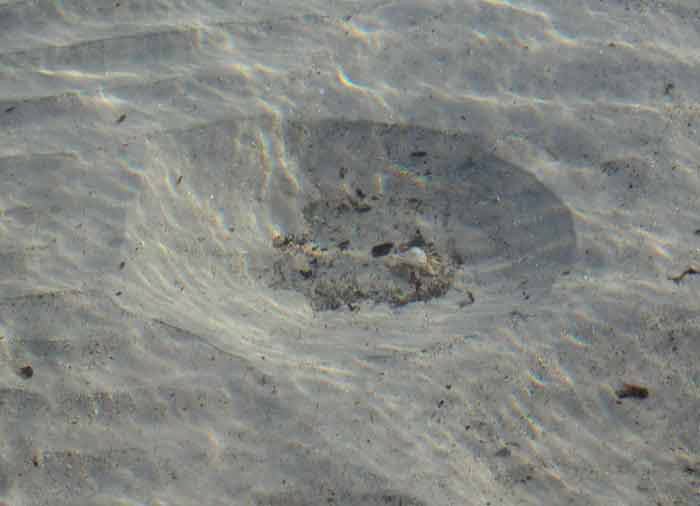Mysterious sand 'craters'
While strolling along the beach at Hare Bay in Jervis Bay, NSW, I noticed in the shallows, a number of indentations in the sand. The more I looked the more indentations I saw; some were randomly spaced and others were in a straight line about a meter apart heading off into the deeper water.

© Australian Museum
At first I could see no evidence of what could have made these indentations, then I noticed a brown ray, about half a meter across, on the bottom in knee-deep water. Its spiracles (the large respiratory openings behind both eyes) were moving rapidly, and after a few minutes it swam off leaving behind one of the mysterious indentations in the sand.
I took the above video footage of the ray in action and sent it to Dr William White at CSIRO, Hobart who identified the ray as an Estuary Stingray, Dasyatis fluviorum. Will confirmed the ray was ‘inhaling’ water through its large pumping spiracles on top of its head and squirting it out into the sand through the gill slits underneath its head. This disturbed the sand and revealed prey items, most likely invertebrates such as crustaceans, worms and molluscs which were then sucked into the mouth. The dorsal placement of the spiracles means that the stingray can ‘breathe’ while covered in sand. Rays along with sharks use electroreception to detect small electric fields emanating from their prey at close range.
The smaller fishes in the video are whiting and toadfish. They are hanging around for a ‘free feed', possibly scraps form the stingray’s feeding and anything that darts away from the ray.
The Estuary Stingray is usually yellow or brown in colour, with a long tail and a distinctive row of spines from the base of the tail to the middle of the back. The disc is rhomboid-shaped. The species grows to a length of around 130 cm and occurs in mangrove swamps and estuaries along the east coast of Australia from the central coast of Queensland south to Batemans Bay, New South Wales.
- Sally Reader, Technical Officer, Ichthyology Section












